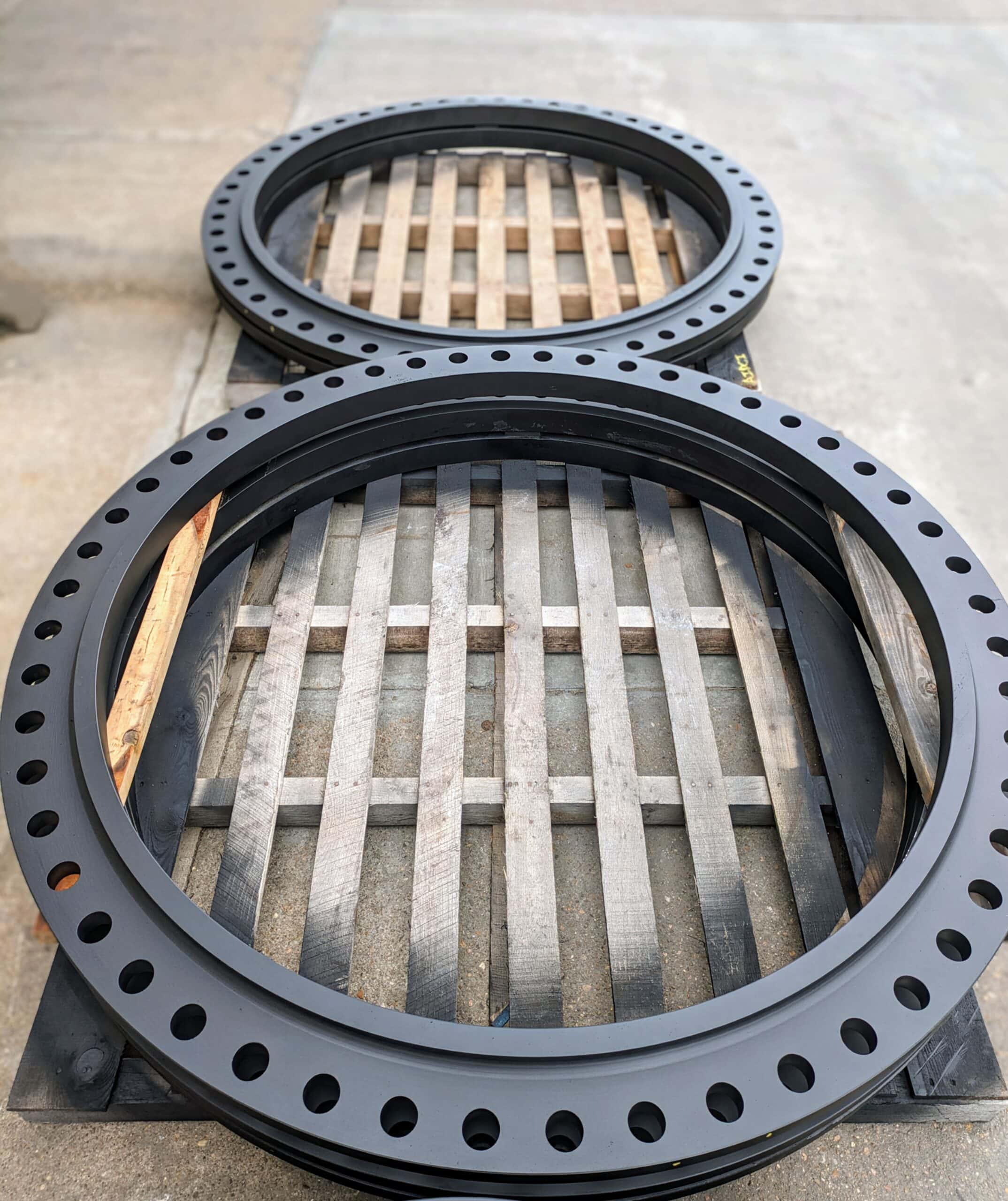Steps To Follow in Welding Flanges
Flange welding is vital in industries where metal structures must be securely joined. To ensure that your welds are strong and secure, the following procedures must be followed:
Flanges connect pipes, valves, and other equipment in piping systems across various industries. They provide a convenient way to dismantle and reassemble the pipes for maintenance, repair, or modification. Moreover, they help reduce vibration and noise and distribute stress evenly across the joint.
Coastal Flange is a highly respected manufacturer and distributor of pipe flanges, offering a comprehensive range of products from 1/2″ to 200″ OD. We offer various flange types, including weld neck, slip-on, blind, lap joint, threaded, and socket weld flanges. Furthermore, we have state-of-the-art facilities at the heart of the oil, gas, and petrochemical industry in Jersey Village, Texas. This strategic location provides convenient access to rail, truck, air, and water transportation.
This guide will cover everything you need to know about flanges, including their types, welding process, benefits, and the industries that utilize them. We will also discuss the key considerations when choosing flanges for your application.
The following are different types of flanges and their uses:
The weld neck flange is a reliable choice for high-pressure and high-temperature applications due to its long, tapered hub that provides a leak-proof connection.
The weld neck flange is a reliable choice for high-pressure and high-temperature applications due to its long, tapered hub that provides a leak-proof connection.
Learn MoreSlip-on flanges are cost-effective and easy to install but not recommended for high-stress applications.
Learn MoreUsed to close the end of a pipe or valve, blind flanges come in various sizes and materials, providing a secure and leak-proof seal. They are also useful for inspecting and cleaning the piping system.
Learn MoreThe lap joint flange consists of a stub end welded to the pipe and a backing flange that sits loosely over the stub end. This design allows easy alignment and bolting, making it suitable for low-pressure applications.
Learn MoreThreaded flanges are designed with internal threads that can be screwed onto the pipe. They are commonly used for low-pressure applications and are easy to install and dismantle.
Learn MoreThe socket weld flange is a great option for high-pressure and high-temperature applications. Its socket-shaped end is welded to the pipe, creating a secure and leak-proof connection.
Learn MoreFlange welding is vital in industries where metal structures must be securely joined. To ensure that your welds are strong and secure, the following procedures must be followed:
The following are the advantages of using flanges in piping systems:
Here are the factors that should be considered when choosing flanges:

Flanges are available in several materials, including carbon steel, stainless steel, and various alloys. The choice of material depends on the type of fluid or gas being transported and the environmental conditions to which the system will be exposed.

When selecting a flange, it is essential to ensure it matches the pipe’s outer diameter. If the flange is too small, it may not be possible to attach it to the pipe. On the other hand, a too-large flange can cause leaks, which can be costly and dangerous.

The pressure rating depends on the material and size of the flange. For instance, a carbon steel flange with a 150-pound pressure rating is suitable for low-pressure applications, while a 300-pound is suitable for high-pressure applications.

Flanges are available in several face types, including flat face, raised face, and ring joint face. The flange face type determines the type of gasket used to seal the joint between the flange and the equipment.

Several other application-specific factors should be considered when selecting flanges. These include the temperature and pressure of the fluid or gas being transported, the frequency of maintenance, and the location of the piping system.

Here are some industries that commonly use flanges:
Whether you need standard or custom flanges, Coastal Flange is your go-to source for all your pipe flange needs. We have 100 years of experience and thousands of flanges shipped each year! We use only the highest quality materials to ensure long-lasting, reliable performance.
Coastal Flange takes great pride in our products' quality and exceptional customer service. We are committed to providing fast, reliable service at a price you can afford. Moreover, our team of experts is always available to answer any questions and assist you in selecting the right flanges for your project.
Contact us to learn more, or request a quote to get started!
Contact us